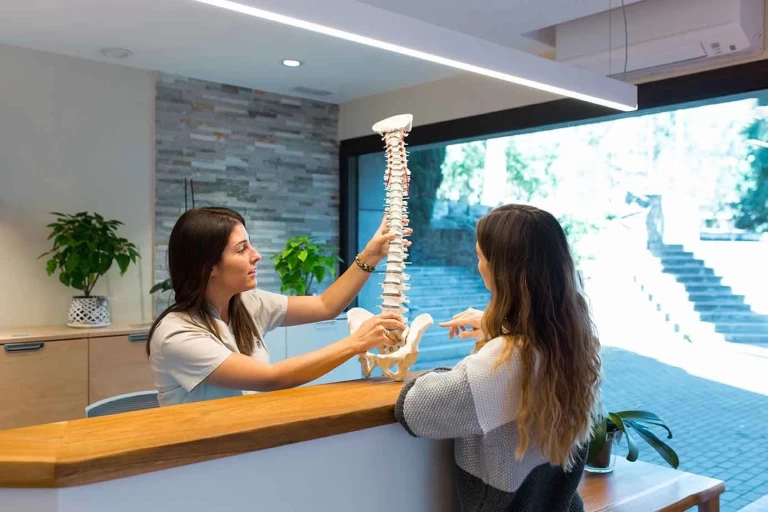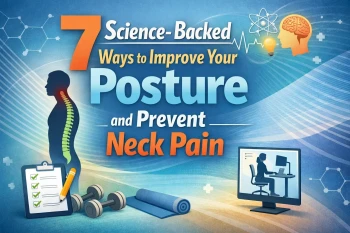
Neck pain has a way of sneaking into your life. Maybe it starts as a dull ache after a long day at your desk. Or it’s that sharp pinch when you turn your head too fast. For some, it’s constant; for others, it flares up at the worst possible moments, during work deadlines, travel, or when you finally get a chance to rest.
Regardless of how it shows up, neck pain is one of the most common musculoskeletal complaints, affecting millions every year. Yet, the real reasons behind it aren’t always obvious. And here’s where things get interesting: the solution may lie higher up, literally, in the upper part of your spine.
Welcome to the world of upper cervical chiropractic care, a specialized approach that focuses on the delicate alignment where your neck meets your head. But before we get into how it can help, let’s break down why neck pain happens in the first place.
The Anatomy of Neck Pain: More Than Just “A Stiff Neck”
Your neck, or cervical spine, is a remarkably engineered structure. It supports the weight of your head — roughly 10 to 12 pounds — and allows for a wide range of motion: nodding, turning, tilting, even those subconscious micro-movements you don’t notice.
But that flexibility comes with a trade-off. The neck’s seven vertebrae are more vulnerable to injury, strain, and misalignment than sturdier parts of the spine. Common causes include:
- Poor posture — Hours hunched over a laptop or scrolling on your phone can shift your head forward, placing extra stress on the cervical spine.
- Injuries — Car accidents, sports collisions, or even a sudden jolt can cause whiplash and ligament damage.
- Muscle strain — Overuse, awkward sleeping positions, or repetitive motion can tighten and irritate neck muscles.
- Joint wear and tear — Osteoarthritis and age-related degeneration can lead to stiffness and pain.
- Nerve compression — Herniated discs or bone spurs can pinch nerves, sending pain down your shoulders or arms.
It’s worth noting that sometimes neck pain isn’t purely “mechanical”, stress, tension, and even certain illnesses can contribute. But in many chronic cases, there’s a structural component that can’t be ignored.
Why the Upper Cervical Spine Matters
Here’s where things get specific. The upper cervical spine — primarily the atlas (C1) and axis (C2) vertebrae, plays a pivotal role in neck health. These two vertebrae sit just beneath your skull and are responsible for much of your head’s rotation and tilt.
When they’re even slightly out of alignment, the ripple effects can be significant:
- Uneven weight distribution on neck muscles
- Irritation of nerves at the brainstem level
- Compensatory misalignments down the spine
- Restricted blood flow and cerebrospinal fluid circulation
Because this area is so close to the brainstem, even small shifts can trigger headaches, dizziness, and muscle tightness, sometimes without obvious neck pain at first.
How Upper Cervical Chiropractic Care Works
Unlike general chiropractic adjustments that may target multiple spinal regions in a single visit, upper cervical chiropractic care focuses on precision. Practitioners use detailed imaging, often X-rays or advanced scans, to measure exactly how your atlas and axis are positioned.
From there, adjustments are gentle, calculated, and specific to your unique anatomy. In fact, many people are surprised by how little force is used. The goal isn’t to “crack” the spine but to guide it back into alignment so your body can restore its own balance.
Once the upper cervical spine is properly aligned, the rest of the spine often follows suit. Muscles relax. Nerve signals flow freely. Inflammation subsides. And because your body isn’t fighting to compensate for that tiny misalignment, healing becomes easier.
Benefits You Might Notice
Patients who undergo upper cervical chiropractic adjustments for neck pain often report:
- Reduced neck stiffness and improved range of motion
- Fewer headaches or migraines
- Decreased muscle tension in shoulders and upper back
- Better posture without constant effort
- Less reliance on pain medication
While results vary from person to person, the common thread is that addressing the root alignment issue tends to produce longer-lasting relief than just treating symptoms.
A Real-World Example
Consider Sarah, a graphic designer who spent years dealing with nagging neck pain. She chalked it up to “bad posture” from work, but physical therapy and stretching only helped temporarily. An upper cervical chiropractor discovered a misaligned atlas, likely from a minor car accident she’d had in her teens.
After a few targeted adjustments, Sarah noticed she could sit at her desk without that familiar ache creeping in. Her headaches became rare instead of weekly. And perhaps most telling, her chiropractor found she needed fewer adjustments over time because her body was holding the correction.
When to Consider Upper Cervical Care
If you’ve tried the usual remedies — massage, stretching, over-the-counter meds , and your neck pain keeps returning, it may be worth exploring whether an upper cervical misalignment is at play. This is especially true if your symptoms also include:
- Recurring headaches
- Dizziness or vertigo
- Shoulder or arm discomfort
- Uneven posture (one shoulder higher, tilted head)
A consultation with an upper cervical specialist can determine whether this approach is right for you.
Neck pain isn’t always simple. Sometimes, it’s not just about sore muscles or bad posture but about the delicate balance at the top of your spine. Upper cervical chiropractic care offers a precise, non-invasive way to address that balance, and in many cases, bring lasting relief.
The neck may be small in size, but its role in your body’s function is enormous. Treat it with the care and attention it deserves, and you might find that easing neck pain also improves your overall well-being.







Leave a comment